Gold prices dip as December rate cut bets wane; economic data in focus
Introduction & Market Context
Polaris Media (OB:POL) presented its second quarter 2025 results on August 15, showcasing continued digital transformation progress amid challenging market conditions in the Nordic media landscape. The Norwegian media group reported mixed results, with strong digital growth partially offsetting declining print revenues, while implementing significant cost-cutting measures particularly in its Swedish operations.
The company’s stock closed at NOK 61 on August 14, near its 52-week low of NOK 60, reflecting investor concerns about the ongoing structural challenges in traditional media segments despite the company’s digital progress.
Quarterly Performance Highlights
Polaris Media reported Q2 2025 EBITDA of NOK 78 million, representing an 11% decline from NOK 88 million in the same period last year. This drop occurred despite a 14% increase in digital revenues to NOK 372 million, up from NOK 327 million in Q2 2024.
As shown in the following chart of key financial metrics, the company maintained tight cost control with operating expenses increasing just 1% year-over-year to NOK 840 million:
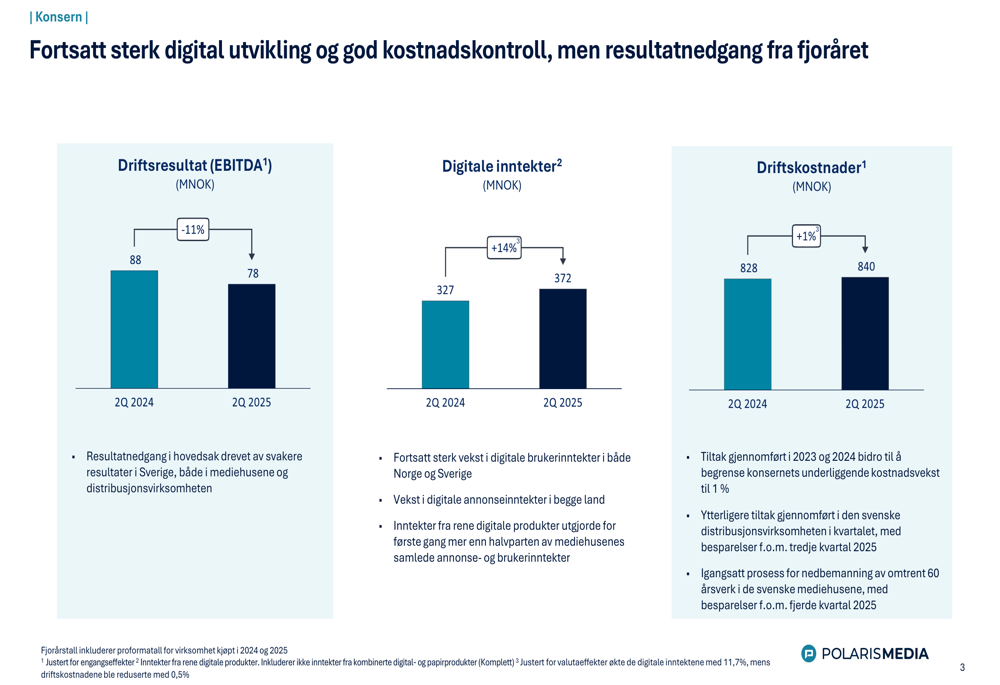
The earnings decline was primarily attributed to weaker performance in Swedish media houses and distribution operations. Digital revenues now exceed 50% of total media house advertising and user revenues, marking a significant milestone in the company’s digital transformation journey.
Segment Performance Analysis
Breaking down results by business segment reveals divergent performance across the company’s operations. Norwegian media houses contributed NOK 58 million to EBITDA (down from NOK 68 million), while Swedish media houses generated NOK 22 million (down from NOK 27 million). The Norwegian distribution segment showed improvement, while Swedish distribution posted an operating loss of NOK 8 million.
As illustrated in the segment breakdown:
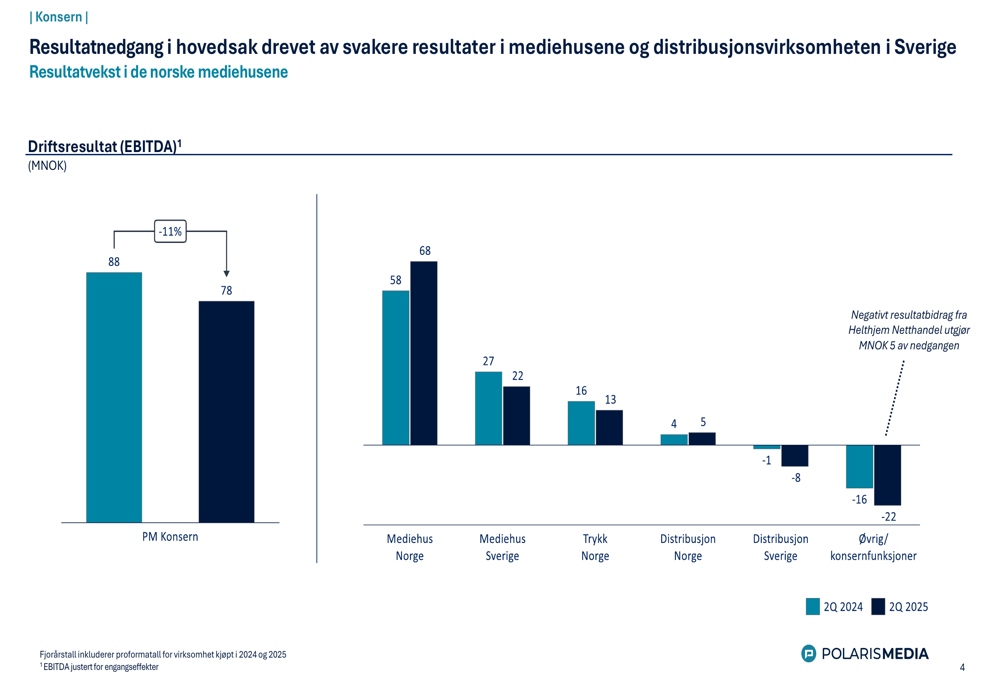
In the Norwegian user revenue segment, total growth reached 7% year-over-year, with digital user revenue surging 17% while traditional "komplett" (complete) subscriptions declined 2%. Digital now represents 51% of Norwegian user revenue:
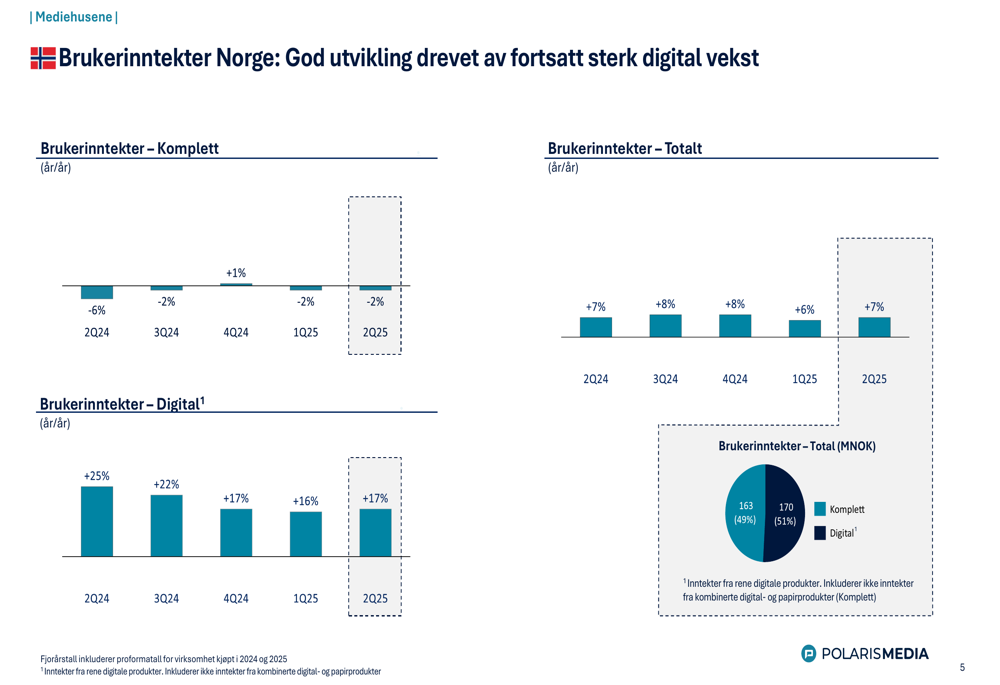
The Swedish user revenue segment showed a different pattern, with total revenue declining 3% despite 14% growth in digital. Traditional subscriptions fell 13%, reflecting accelerated print decline in the Swedish market:
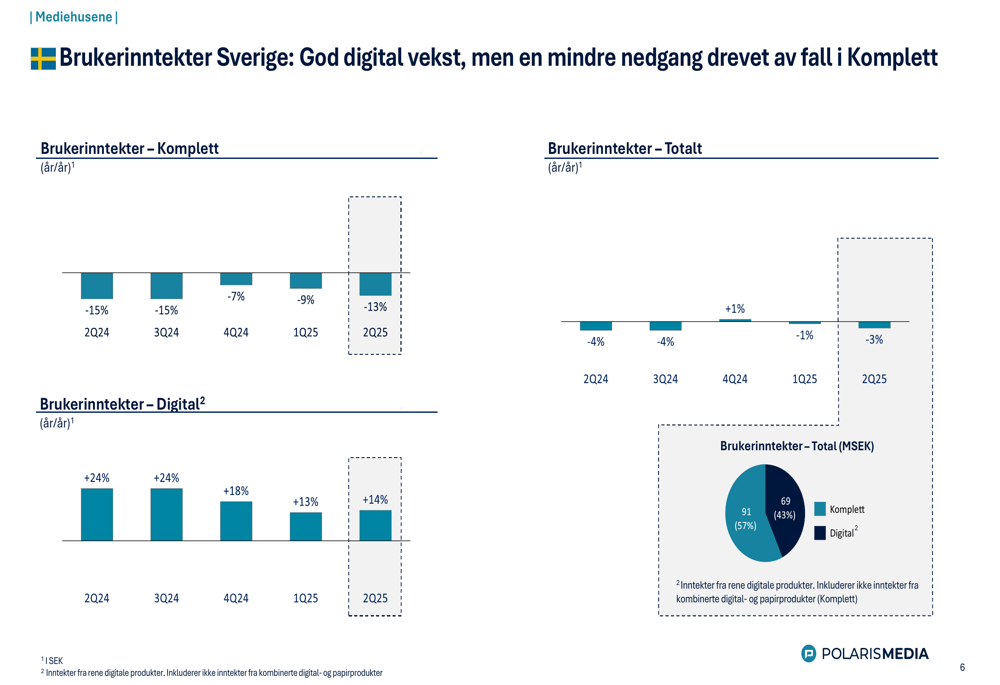
Advertising revenues continued their structural decline in both markets. In Norway, total ad revenue fell 5%, with print advertising down 17% while digital advertising grew 6%:
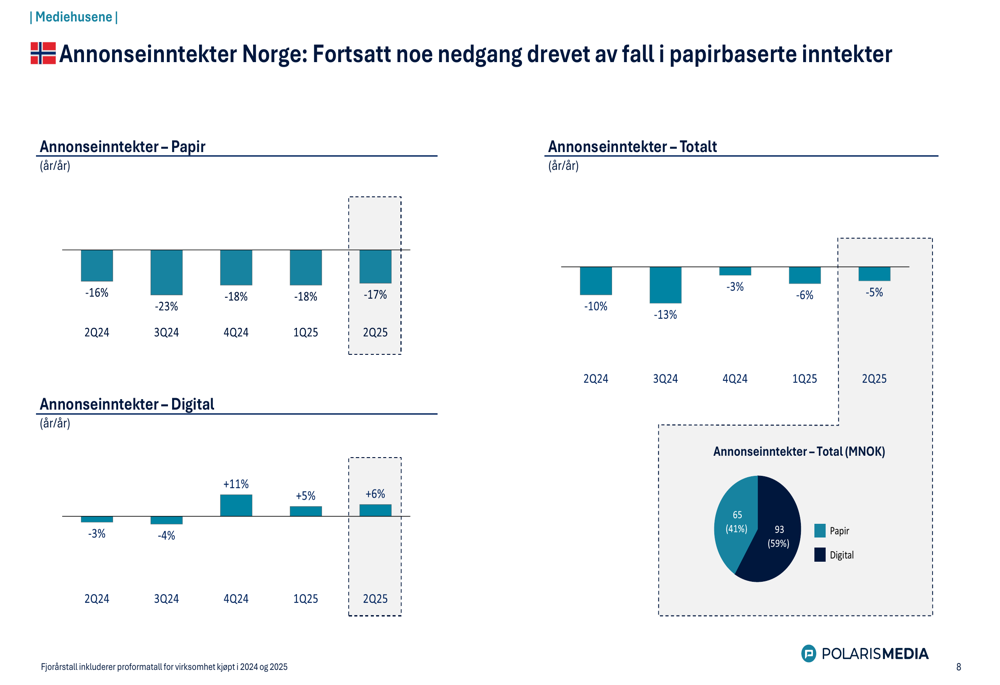
Swedish advertising showed similar trends with a 5% overall decline, as print advertising fell 10% and digital advertising increased by a modest 2%:
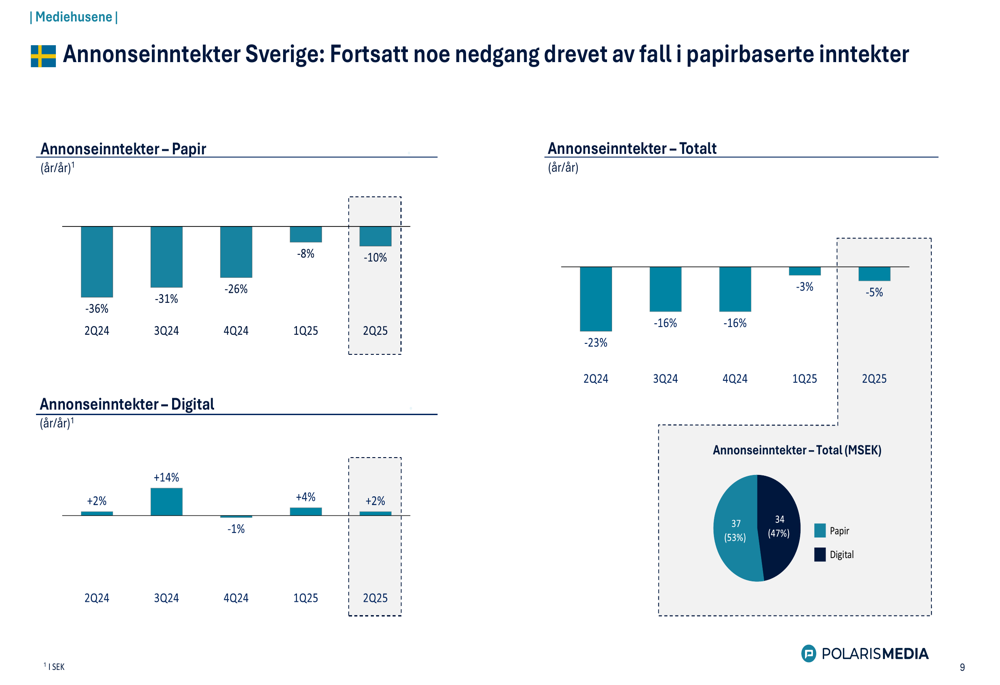
Efficiency Measures and Outlook
In response to challenging market conditions, particularly in Sweden, Polaris Media has implemented significant efficiency measures. The company has initiated a workforce reduction of approximately 60 positions in Swedish media houses, expected to generate annual savings of around SEK 45 million. This restructuring will incur one-time costs of SEK 35-40 million in the second half of 2025.
The following chart details the efficiency measures being implemented across Swedish operations:

Additional structural changes in Swedish distribution were completed in Q2 2025, with savings expected to materialize from Q3 2025 onward. These measures are projected to yield approximately SEK 15 million in annual savings.
In the printing segment, despite a 28% revenue decline to NOK 69 million, the division maintained a solid EBITDA contribution of NOK 13 million through significant cost reductions:
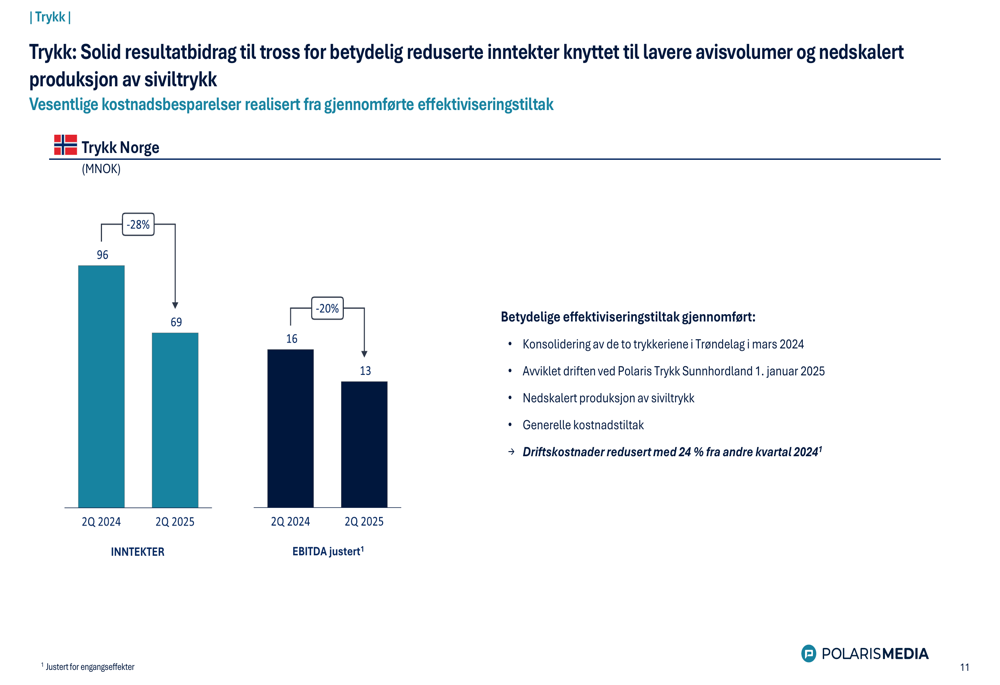
The company highlighted that efficiency measures in printing operations, including consolidation in Trøndelag and closure of the Sunnhordland facility, resulted in a 24% reduction in operating costs compared to Q2 2024.
Financial Position
Despite operational challenges, Polaris Media maintained a strong financial position, even after distributing approximately NOK 1.1 billion in dividends during the quarter. The company’s balance sheet strength is illustrated in the following financial position overview:

The consolidated income statement shows that while operating profit (EBIT) decreased slightly to NOK 25 million from NOK 27.5 million in Q2 2024, profit before tax declined more significantly to NOK 45.7 million from NOK 635.4 million, largely due to extraordinary items in the previous year:
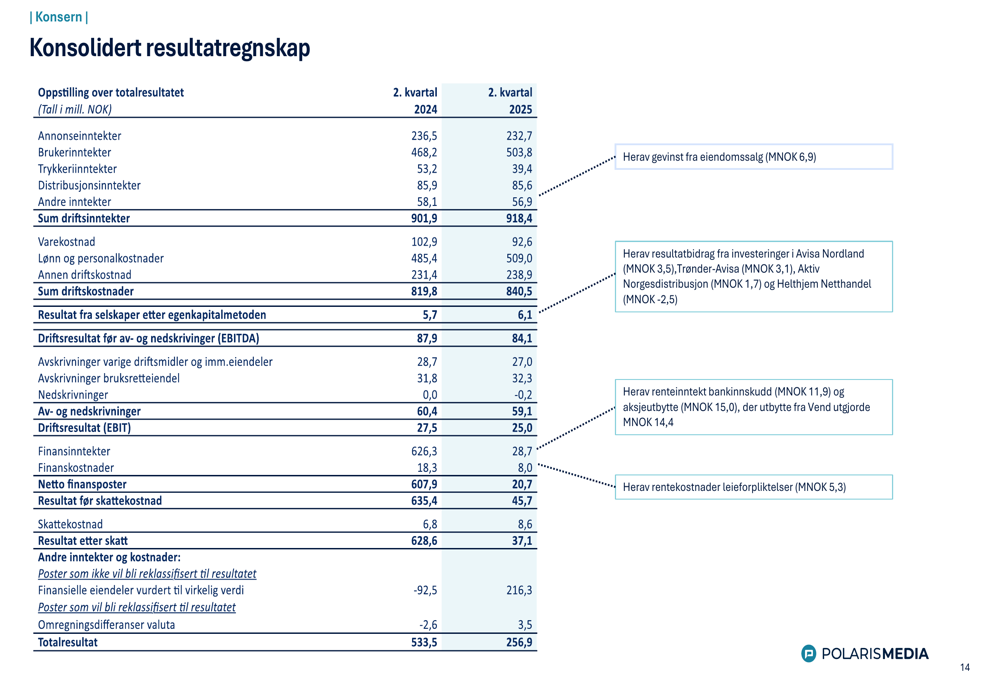
Cash flow from operations reached NOK 65 million in Q2 2025, down from NOK 75 million in the same period last year, while the company’s net cash flow was negative NOK 1,052 million due primarily to the substantial dividend payments:
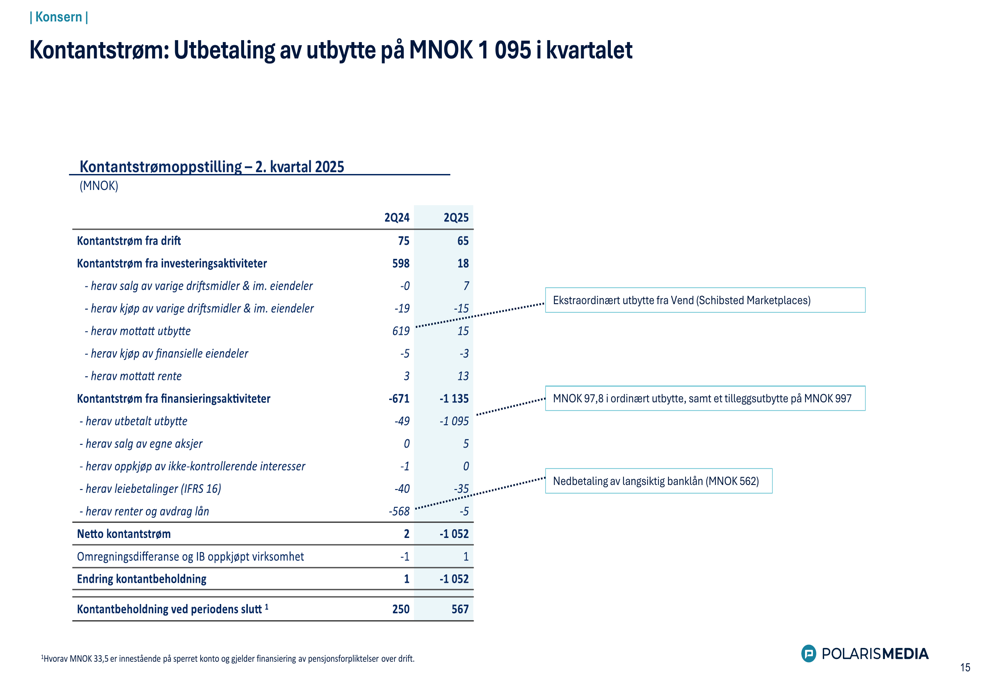
On a positive note, Polaris Media’s Swedish subsidiary Stampen Media received recognition for its quality journalism and innovation, winning seven awards at the INMA Global Media Awards, including first place in the audio category for the third consecutive year through Göteborgs-Posten.
As Polaris Media continues navigating the structural shift from print to digital media, its focus on digital growth, cost efficiency, and maintaining financial strength positions the company to weather ongoing industry challenges while pursuing its transformation strategy.
Full presentation:
This article was generated with the support of AI and reviewed by an editor. For more information see our T&C.
